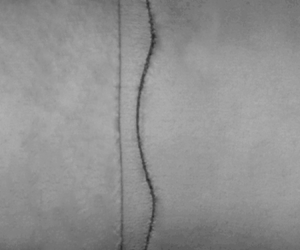Article contents
Manipulation of Richtmyer–Meshkov instability on a heavy–light interface via successive shocks
Published online by Cambridge University Press: 13 January 2025
Abstract

The manipulation of the Richtmyer–Meshkov instability growth at a heavy–light interface via successive shocks is theoretically analysed and experimentally realized in a specific shock-tube facility. An analytical model is developed to forecast the interface evolution before and after the second shock impact, and the possibilities for the amplitude evolution pattern are systematically discussed. Based on the model, the parameter conditions for each scenario are designed, and all possibilities are experimentally realized by altering the time interval between two shock impacts. These findings may enhance the understanding of how successive shocks influence hydrodynamic instabilities in practical applications.
JFM classification
Information
- Type
- JFM Papers
- Information
- Copyright
- © The Author(s), 2025. Published by Cambridge University Press
References
- 3
- Cited by


